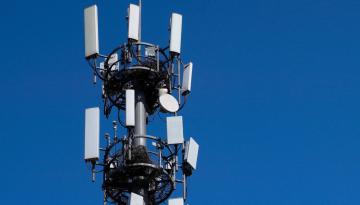If you've spent any time at all on Facebook recently, you may have heard how 5G technology is behind the COVID-19 pandemic, causing cancer and killing flocks of birds.
None of this is true, but the claims persist - being pushed into the mainstream not just by troublemakers on social media, but politicians.
Scientists have long said people should get their information from trusted sources, not conspiracy theorists, but reliable information hasn't always been easy to find for the average person online - buried beneath an avalanche of garbage.
A recent survey by the Telecommunications Forum (TCF) - which represents telcos like 2degrees, Vodafone, Chorus, Spark and others - found fewer than a quarter of New Zealanders are confident they know enough about 5G, and 86 percent said they'd like factual information to be easier to find.
"The research has shown what we have long suspected: many New Zealanders are confused or unsure about 5G and what it may mean for them," said chief executive Geoff Thorn.
"That's perhaps not surprising given there's so much varying and confusing information out there."
The survey also found only about half of Kiwis are comfortable 5G is safe, - 12 percent think it's dangerous and another 36 percent are unsure.
TCF on Thursday launched 5Gfacts.org.nz, hoping to quash the various half-truths and nonsense doing the rounds.
"We've got a lot of information from respected scientists - we've collated the material into one place," Thorn told The AM Show on Thursday. "Most New Zealanders are actually looking for easy access to factual information, and that's what we're providing."
The survey found the most-trusted source of information on 5G is 'independent scientists or industry experts', yet only a quarter of Kiwis were aware the Prime Minister's Chief Science Advisor Juliet Gerrard issued advice on the technology just last year. That's included on the 5Gfacts.org.nz website, alongside research and advice from the World Health Organization, the Ministry of Health and others.
Conspiracies around mobile technology have been around since radio was first invented. In the 1970s people feared microwaves, and in the 1990s they were sceptical of 2G.
The waves produced in all mobile generations all fall into a part of the electromagnetic spectrum known as 'non-ionising' - at the energies used to transmit signals, they simply can't damage DNA.
At present, 5G uses waves in a similar range to Wi-Fi.
5G in the future will also make use of targeted beams at higher frequency bands - this sounds scary, but the Ministry of Health says it's arguably safer than 3G and 4G. Rather than send the signal out in a wide beam, 5G signals will be zapped straight from the antenna to the user's phone.
"When a user is downloading data from a 5G site, the radio signal carrying the data is directed towards that user, and is not spread out over a wide area - mostly in directions where it is not needed - as currently occurs. The beam is turned off when the data has been transferred.
"This, alongside the faster rates at which data is transferred, will most likely result in lower exposures than if existing technologies were used."

Testing at operational 5G sites in Australia found exposure to "5G signals are similar to, or lower than, those from existing cell sites, and small fractions of the public limit in the standard".
These high-frequency waves are already in use for satellite TV transmissions - yet no one has ever protested against those.
TCF says if you're "happy to use mobile services on 3G or 4G today, then you should be equally comfortable with using 5G".
"It's going to provide faster and better services - that's something New Zealanders are looking forward to," said Thorn. "The website contains all the information you need."





